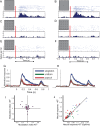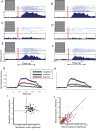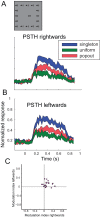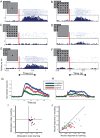Responses of tectal neurons to contrasting stimuli: an electrophysiological study in the barn owl
- PMID: 22745787
- PMCID: PMC3380014
- DOI: 10.1371/journal.pone.0039559
Responses of tectal neurons to contrasting stimuli: an electrophysiological study in the barn owl
Abstract
The saliency of visual objects is based on the center to background contrast. Particularly objects differing in one feature from the background may be perceived as more salient. It is not clear to what extent this so called "pop-out" effect observed in humans and primates governs saliency perception in non-primates as well. In this study we searched for neural-correlates of pop-out perception in neurons located in the optic tectum of the barn owl. We measured the responses of tectal neurons to stimuli appearing within the visual receptive field, embedded in a large array of additional stimuli (the background). Responses were compared between contrasting and uniform conditions. In a contrasting condition the center was different from the background while in the uniform condition it was identical to the background. Most tectal neurons responded better to stimuli in the contrsating condition compared to the uniform condition when the contrast between center and background was the direction of motion but not when it was the orientation of a bar. Tectal neurons also preferred contrasting over uniform stimuli when the center was looming and the background receding but not when the center was receding and the background looming. Therefore, our results do not support the hypothesis that tectal neurons are sensitive to pop-out per-se. The specific sensitivity to the motion contrasting stimulus is consistent with the idea that object motion and not large field motion (e.g., self-induced motion) is coded in the neural responses of tectal neurons.
Conflict of interest statement
Figures





Similar articles
-
Behavioral Evidence and Neural Correlates of Perceptual Grouping by Motion in the Barn Owl.J Neurosci. 2018 Jul 25;38(30):6653-6664. doi: 10.1523/JNEUROSCI.0174-18.2018. Epub 2018 Jul 2. J Neurosci. 2018. PMID: 29967005 Free PMC article.
-
Responses to Pop-Out Stimuli in the Barn Owl's Optic Tectum Can Emerge through Stimulus-Specific Adaptation.J Neurosci. 2016 Apr 27;36(17):4876-87. doi: 10.1523/JNEUROSCI.3339-15.2016. J Neurosci. 2016. PMID: 27122042 Free PMC article.
-
Comparison of pop-out responses to luminance and motion contrasting stimuli of tectal neurons in pigeons.Brain Res. 2020 Nov 15;1747:147068. doi: 10.1016/j.brainres.2020.147068. Epub 2020 Aug 19. Brain Res. 2020. PMID: 32827547
-
The nucleus isthmi and dual modulation of the receptive field of tectal neurons in non-mammals.Brain Res Brain Res Rev. 2003 Jan;41(1):13-25. doi: 10.1016/s0165-0173(02)00217-5. Brain Res Brain Res Rev. 2003. PMID: 12505645 Review.
-
Saliency mapping in the optic tectum and its relationship to habituation.Front Integr Neurosci. 2014 Jan 16;8:1. doi: 10.3389/fnint.2014.00001. eCollection 2014. Front Integr Neurosci. 2014. PMID: 24474908 Free PMC article. Review.
Cited by
-
A neural code for looming and receding motion is distributed over a population of electrosensory ON and OFF contrast cells.J Neurosci. 2014 Apr 16;34(16):5583-94. doi: 10.1523/JNEUROSCI.4988-13.2014. J Neurosci. 2014. PMID: 24741048 Free PMC article.
-
Behavioral Evidence and Neural Correlates of Perceptual Grouping by Motion in the Barn Owl.J Neurosci. 2018 Jul 25;38(30):6653-6664. doi: 10.1523/JNEUROSCI.0174-18.2018. Epub 2018 Jul 2. J Neurosci. 2018. PMID: 29967005 Free PMC article.
-
Noise correlations and neuronal diversity may limit the utility of winner-take-all readout in a pop out visual search task.PLoS Comput Biol. 2025 May 7;21(5):e1013092. doi: 10.1371/journal.pcbi.1013092. eCollection 2025 May. PLoS Comput Biol. 2025. PMID: 40334249 Free PMC article.
-
Surround Modulation Properties of Tectal Neurons in Pigeons Characterized by Moving and Flashed Stimuli.Animals (Basel). 2022 Feb 15;12(4):475. doi: 10.3390/ani12040475. Animals (Basel). 2022. PMID: 35203185 Free PMC article.
-
Preference-independent saliency map in the mouse superior colliculus.Commun Biol. 2025 Apr 4;8(1):565. doi: 10.1038/s42003-025-08006-x. Commun Biol. 2025. PMID: 40185893 Free PMC article.
References
-
- Treisman A. Perceptual grouping and attention in visual search for features and for objects. J Exp Psychol Hum Percept Perform. 1982;8:194–214. - PubMed
-
- Hochstein S, Ahissar M. View from the top: hierarchies and reverse hierarchies in the visual system. Neuron. 2002;36:791–804. - PubMed
-
- Blough DS. Visual search in the pigeon: hunt and peck method. Science. 1977;196:1013–1014. - PubMed
-
- Posner MI, Cohen Y editors. Components of visual orienting. Hilsdale, New Jersey: Erlbaum. 1984.
Publication types
MeSH terms
LinkOut - more resources
Full Text Sources

